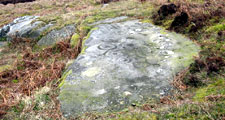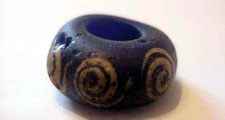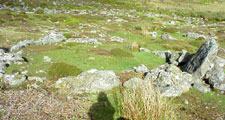Prehistoric
(to 70AD)
After the retreat of the glaciers at the end of the last ice age, the glacial tundra was gradually colonised by woodland made up of pioneer species like Birch, Juniper and Willow. In the period of relatively stable and warmer climate which followed a mosaic of woodland covered all but the highest Pennine summits, dominated in most areas by Oak, Elm and Hazel, with Ash on limestones, Pine and Birch on acidic soils and Alder and Willow on wetter ground.
The onset of the wetter Atlantic climate at around 5000 BC saw blanket peat spreading across the higher moorland ridges and summits displacing woodland. This process was fuelled from around 3000 BC as woodland began to be cleared on a small scale by Neolithic farmers. The progressive clearance of woodland continued throughout the Bronze and Iron Ages and by the time of the Roman invasion much of lowland Durham would have been covered by a network of small ‘Celtic fields’ surrounding small family farmsteads. Extensive tracts of blanket bog, rough grazing and open woodland remained on the high ridges of the uplands.
Little survives from this period in the modern landscape. Some features of Bronze Age ritual and domestic landscapes – stone circles, cup and ring marked stones and cairnfields – can be found in the upland moors. The most notable examples are on Barningham and Ravock moors. The field systems and cultivation terraces of early farms are visible as earthworks where they have escaped deep ploughing. Elsewhere they persist only as crop marks. Remains of the hearths of early iron workers are scattered across high ground exposed to the prevailing winds.



